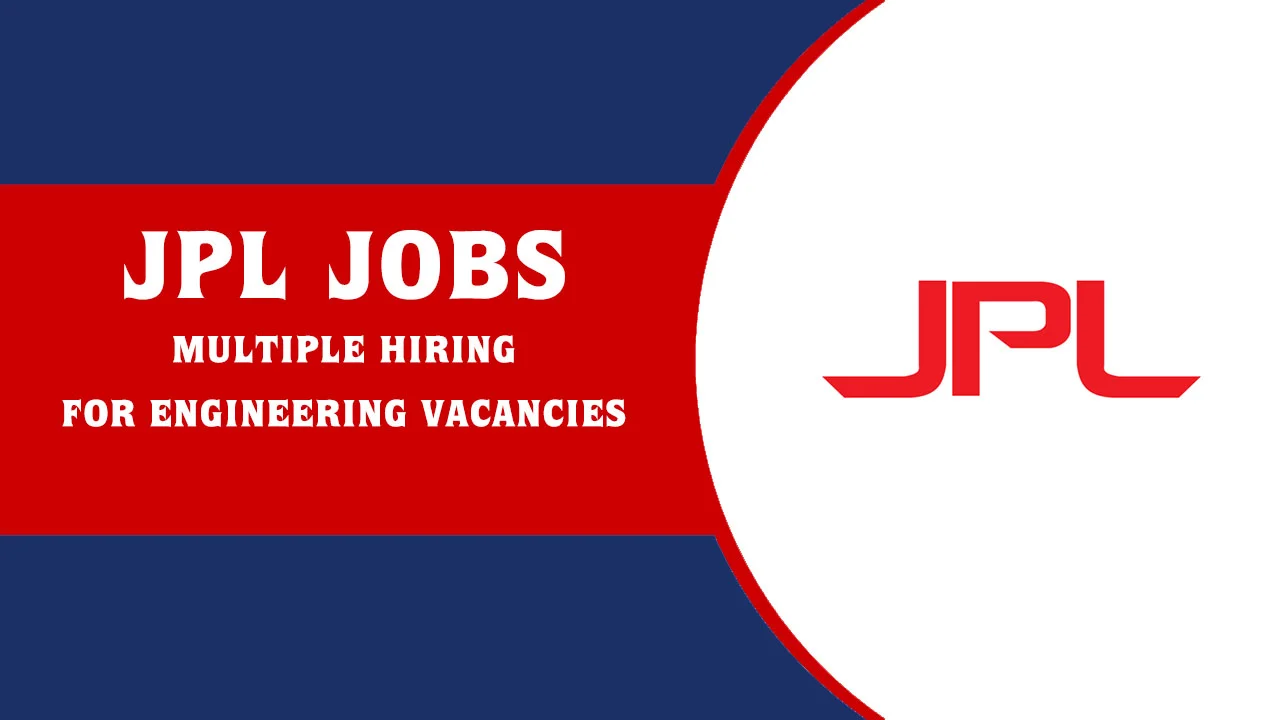If you’ve ever wanted to help create the future of space exploration while solving practical problems on Earth, you might want to check out JPL Jobs. For those passionate about space missions, robotics, and modern technology, a job at the Jet Propulsion Laboratory represents much more than a regular career move. It’s an entry point into some of the most important and imaginative scientific work being done in the United States. Here, job seekers will find everything they need to know about the types of jobs available and the hiring process.
Careers at JPL stand out because it is the leading agency for NASA’s robotic exploration of space. It’s the place where science fiction becomes reality, where teams of brilliant individuals influence the future of humanity’s reach beyond Earth. Whether someone is a software developer with a passion for aerospace, a mechanical engineer with a love of design, or a student just beginning to explore possibilities through internships, JPL has something to offer. The laboratory attracts individuals who are not only skilled but also highly curious about how things work and what lies beyond. So apply today!
For More Latest Aviation Jobs: Click Here
| Company Name: | JPL |
| Job Locations: | United States |
| Last Updated on: | August 15th, 2025 |
JPL Jobs in United States | Announced Remote Opportunities

Overview of Jet Propulsion Laboratory (JPL)
The Jet Propulsion Laboratory is a federally funded research and development center that operates from the California Institute of Technology (Caltech). It is not a standalone NASA facility but functions as a specialized lab contracted by NASA. This makes it a standout among other space agencies in the United States. Located in Pasadena, California, JPL has played an important role in exploring the outermost corners of our solar system and beyond. What sets it apart is its constant focus on robotic missions rather than human spaceflight.
In the 1930s, Caltech students and researchers began experimenting with rocketry, a field that was then in its infancy. Through the decades, the lab has grown into a leading center for space science research. Today, JPL manages some of NASA’s most iconic projects, including the Mars rovers, climate-monitoring satellites, and deep-space missions like Voyager and Perseverance. The lab has also been involved in Earth observations, using satellite data to track wildfires, greenhouse gases, and global climate patterns. It’s no overstatement to say that JPL’s work has influenced both our understanding of space and life on Earth.
Work Culture
Working at the Jet Propulsion Laboratory is not just about the job title or the project list. It’s about becoming part of a culture that values discovery, collaboration, and pushing the boundaries of what’s possible. The environment is designed to make creativity feel natural. It’s not unusual to walk into an open lab space and see people discussing ideas from different disciplines. The lab encourages a culture where asking questions is just as important as finding answers. Whether someone is working on Earth observation satellites or spacecraft instruments on Mars, their everyday life revolves around discovery and problem-solving.
One of the most appealing features of JPL’s work culture is its dedication to collaboration. Engineers, scientists, programmers, and technicians work closely together, each contributing their expertise to a highly challenging mission. The lab promotes a casual but focused working environment where creativity is a shared value. It’s common to see team members in jeans or JPL T-shirts, not because competence is lacking but because the work speaks louder than the outfit. Here, people from different ethnicities, genders, and academic backgrounds are not just welcome, they are respected and encouraged to grow. There is freedom here for individuals to express their strengths, regardless of whether they prefer structured environments or need flexibility to get their best work done.
Types of Job Opportunities at JPL
There is much more to JPL jobs than sitting at a control panel watching rockets. While engineering is at the center of most missions, there are many specialized jobs that keep everything on track, from managing timelines to analyzing scientific data. This variety makes the lab appealing to a wide range of professionals, each contributing to getting satellites into orbit or sending rovers to Mars. Below are some of the most important job categories where candidates can explore long-term career opportunities.
Engineering (Aerospace, Mechanical, Electrical)
Engineering at JPL allows space missions to operate in unpredictable environments by designing, building, and testing equipment. Aerospace engineers work on flight mechanics, propellers, and the spacecraft structure. Mechanical engineers are involved in everything from component design to creating Rover wheels. Electrical engineers focus on avionics, sensor systems, and power generation. In addition to textbook knowledge, these positions require accuracy and an understanding of how systems work.
Software Development and IT
Satellites in space and data centers on Earth are interconnected, and software development plays an important role. Developers create software that controls the spacecraft, processes mission data, and supports simulation environments. Meanwhile, IT professionals keep networks secure, manage databases, and ensure effective digital collaboration across departments. From machine learning models to mission planning tools, tech professionals in these roles help translate scientific goals into digital solutions.
Scientific Research & Data Analysis
The scientists at JPL aren’t just making predictions, they’re working directly with mission data to study planetary surfaces, atmospheric patterns, and cosmic radiation. These positions involve designing experiments, calibrating instruments, and interpreting data from missions like the Mars Reconnaissance Orbiter or Earth-monitoring satellite. Data analysts often use powerful algorithms to extract meaning from large datasets. The goal is not just to observe but to understand and publish findings that influence scientific knowledge globally.
Administrative & Project Management
Behind every successful mission is a dedicated team of project managers and administrative professionals. These individuals ensure timelines are met, budgets are balanced, and communication flows efficiently between departments. Project managers often have technical backgrounds, but their strength lies in organizing large-scale initiatives involving hundreds of people. Administrative roles, on the other hand, support everything from scheduling to governance, keeping daily operations running efficiently.
Technical & Skilled Trades
While scientists and engineers draw up blueprints, skilled tradespeople turn those plans into physical reality. Technicians build prototypes, assemble instruments, and help run important lab tests. There are also machinists, electricians, and fabrication experts who handle everything from clean room maintenance to spacecraft component assembly. These positions may not always be in the spotlight, but they are incredibly valuable for mission effectiveness and system safety.
Internships and Student Opportunities at JPL
For students and fresh graduates who want more than a theoretical understanding of science and engineering, JPL offers internship programs that provide actual experience on real NASA projects. These opportunities come in various formats, including summer internships, year-round roles, and co-op programs that follow academic calendars. What makes these programs stand out is how closely interns are involved in the mission of work. In addition to observing, they also contribute to research, design, and testing, and often see their work influence the outcome. From coding software to supporting satellite operations, interns are given meaningful, relevant tasks that reflect the laboratory’s dedication to developing the next generation of experts.
Most programs are open to U.S. citizens and permanent residents enrolled in accredited universities, although some pathways may also be available through specific international partnerships. The application process usually involves an online submission through the laboratory’s internship portal, followed by a review and possible interview with hiring managers. Interns are generally placed based on their fields of study and personal interests. Summer positions usually fill quickly, so applying early in the academic year is highly encouraged. These programs often offer stipends and provide experience that correlates with entry-level careers. For students looking for remote-friendly roles, some projects allow hybrid work depending on mission needs. Programs such as the JPL Year-Round Internship Program and Summer Internship Program are highly respected in the industry. They often serve as a launchpad to permanent positions at the lab or elsewhere within the aerospace sector.
Salary & Benefits Overview
There are compensation packages for JPL jobs that reflect the highly specialized skill sets required in all of its departments. Salaries depend on the position and the level of experience. For example, aerospace engineers in junior roles generally earn between $83,000 and $95,000 per year, while senior mechanical engineers can earn up to $135,000. Software professionals often begin at $90,000, with more senior positions exceeding $140,000. Those working in project leadership or systems management usually fall between $100,000 and $130,000, depending on mission and involvement. Interns are compensated as well, with stipends ranging from $6,000 to $8,000 for summer placements.
Beyond base pay, employees benefit from a well-rounded package designed to support both professional success and personal well-being. These include healthcare coverage, retirement planning tools, and flexible arrangements that reflect the lab’s commitment to work-life balance. Here are some of their perks:
- Medical, dental, and vision insurance for full-time employees
- 401(k) retirement savings plan with employer contributions
- Paid holidays and generous time-off policies
- Remote work flexibility where applicable based on project requirements
- Caltech campus discounts on dining, wellness programs, and cultural events
- Access to employee wellness resources, including mental health services
- Support for professional development, certifications, and training
- On-site amenities like cafeterias, fitness centers, and campus shuttle services.
Eligibility Criteria
Applying for JPL jobs requires more than just an impressive resume. Most technical positions demand at least a bachelor’s degree in a relevant field such as engineering, computer science, or the physical sciences. Research-focused roles often call for a graduate degree, especially when the work involves data modeling, planetary studies, or specialized robotics. Applicants also need to meet specific citizenship or residency requirements, as most positions involve access to federally controlled technology or research. Security clearance isn’t universal, but some jobs do require a background check depending on the mission’s significance.
The lab values candidates who can combine extensive technical knowledge with flexibility and clear communication. Because these projects are collaborative and multidisciplinary, those who succeed here are usually able to balance independent problem-solving with joint execution. Whether applying for an engineering role or a systems analyst position, applicants should be ready to show both expertise and curiosity.
- Applicants with interdisciplinary experience, such as combining AI with aerospace systems, often stand out during candidate selection.
- Experience in field projects, labs, or competitions is valued as much as academic degrees, especially in entry-level roles.
- Strong written communication is a necessity for positions involving data documentation, technical reports, or proposal development.
- Candidates with previous NASA, defense, or space tech expertise may meet the preferred qualifications in specialized departments.
- Team experience in high-pressure or demanding environments is a plus, especially in project leadership or test coordination roles.
Application Process for JPL Jobs
There is nothing complicated about applying for JPL jobs. Whether someone is aiming for a full-time role in engineering or a short-term internship, everything begins with the lab’s official careers portal. Here’s how to proceed with the process step-by-step:
- Click the “Apply Here” button to head over to the official careers portal, where you can browse job listings by keyword, category, or location.
- Choose a position that fits your background and goals, then read through the full job description carefully before selecting “Apply Now.”
- Set up an account to create your candidate profile. Upload required documents such as your resume and, if applying for a student role, your transcript.
- Customize your resume to reflect experience with specific tools, systems, or projects that directly relate to the role you’re applying for.
- Prepare a targeted cover letter that connects your skills and goals to the lab’s mission. Skip the generic phrases and focus on showing that you’ve done your homework.
- After submission, shortlisted candidates are contacted for a preliminary phone interview. This is followed by both technical and behavioral rounds conducted online or physically.
Summary
Anyone serious about contributing to space science, engineering innovation, or planetary research should absolutely explore JPL jobs. This lab is where meaningful work meets world-class missions. This overview covers everything from internship openings and salaries to eligibility requirements and the entire recruitment process. If a career in robotics, software, or scientific discovery sounds exciting, then it’s worth taking the next step and applying. Whether you’re fresh out of school or have years of experience, there’s a place here to grow, collaborate, and be part of something extraordinary.
 Find Newest Jobs in USA
Find Newest Jobs in USA



